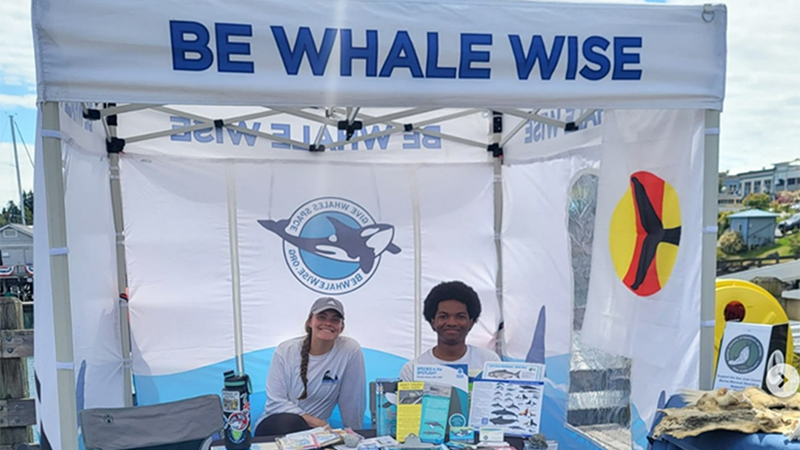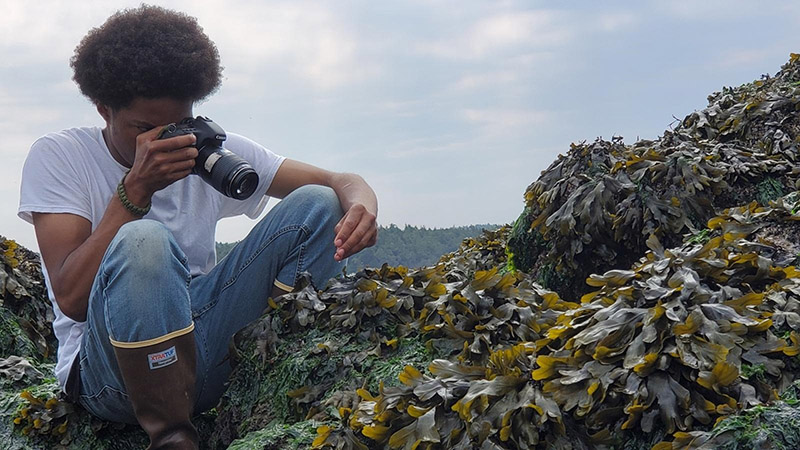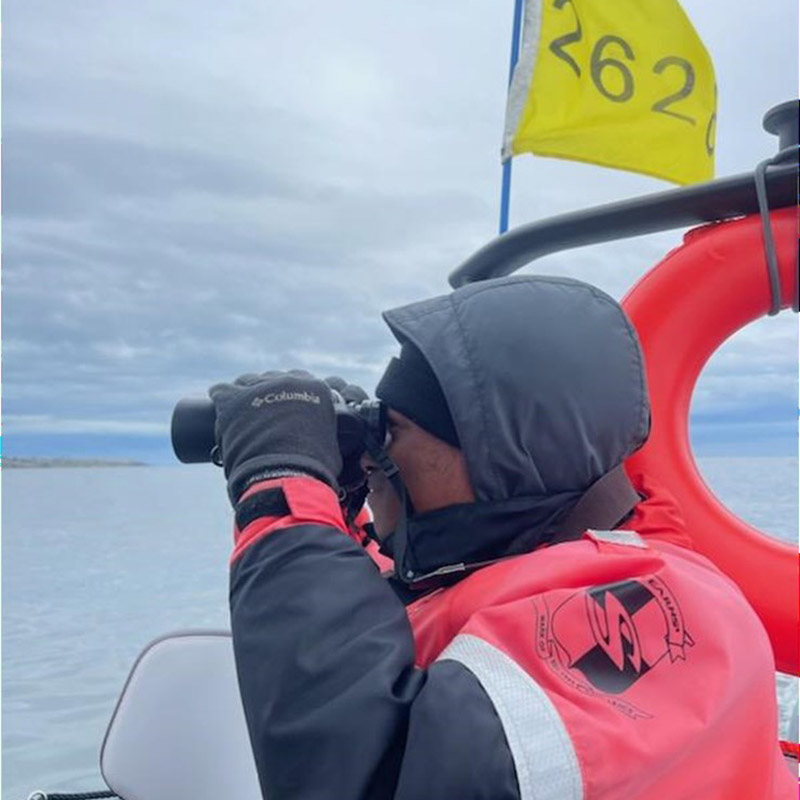Posted: 12/19/2024
Pierre keeps reaping from Doris Duke program

By Ronica Stromberg
The Doris Duke Conservation Scholars program ceased operations in 2024, but Darian Pierre, a Husker junior, said he still benefits from his time in the program's last cohort.
A junior earning a fisheries and wildlife degree at the University of Nebraska-Lincoln, Pierre spent the summers of 2023 and 2024 in the state of Washington, learning from and working with conservation professionals through the program. He and Haley Bates from the University of Nebraska-Omaha were the last Nebraskans to serve as Doris Duke Conservation Scholars.
"It definitely gave me more confidence, and I feel like I got a lot of skills that I wouldn't have gotten otherwise," Pierre said of participating in the program. “One of the main things I wanted to do with the internship was see if marine biology was actually something I was still interested in, and it definitely was, so if I had a really cool opportunity to be a marine biologist later, then I feel I would take that."
After going through orientation the first summer, Pierre worked two internships in the second summer, one with the Friday Harbor Laboratories and one with The Whale Museum. The Doris Duke program paid all expenses and provided a stipend.
For Friday Harbor Laboratories, Pierre surveyed marine invertebrates and algae in the tide pools of Yellow Island. Besides identifying and counting the various species, he photographed animals like barnacles, crabs and sea lemons for a final photography project for the labs.

For The Whale Museum, his main responsibility was to enter data into the Whale Hotline database from marine mammal sightings reported by the Orca Network or the public through telephone calls, email or online. Pierre said this data entry involved more critical thinking than past data entry he had done because he had to judge the reliability of the reporter and fact-check reports. From each description of a whale sighting, he collected the time, date, location and species but also tried to glean important information like what direction a whale was heading.
When callers reported stranded marine mammals, Pierre was able to respond to three calls with the team. In two of the calls, harbor seals needed medical attention, so Pierre saw how the team captured and transported the seals to the Wolf Hollow Wildlife Rehabilitation Center. In the other call, a seal pup left by its mother to wean was sucking on boats instead. Pups may do that, Pierre learned, and the behavior didn't justify a capture. The team explained to the boaters what was going on and gave them instructions to call back if anything new happened.
Pierre also watched and helped with necropsies of harbor seals, taking lab samples from dead seals to determine cause of death. He said the necropsy work was a desirable skill to gain, especially since he had no plans to go to veterinarian school.
"That was one of my favorite parts, honestly, because it was very hands-on and I got to do different things on different days," he said. “One of the days, I got to take the notes. That was actually kind of intense, because you have to check off and make sure that everyone's getting all the samples. It's like, 'Wait you forgot to get this lymph node,' and then, a lot of things are happening around you."
He also took part in the Soundwatch Boater Education Program of The Whale Museum. In Dock Talk, he spoke to boaters onshore about marine mammal regulations and safe practices when encountering a mammal while boating. When the sightings network reported an endangered Southern Resident whale in the Salish Sea, Pierre was able to boat out to it with the Soundwatch team. They followed the whale to ensure other boats kept what was then the legal distance of 300 yards from Southern Residents. This distance expanded to 1,000 yards on January 1, 2025, through Washington Senate Bill 5371.

Pierre's final project for The Whale Museum involved determining where and how many 2017-2022 whale sightings dealt with orca, humpback and mink species. He found that most reports of whale sightings came from the west side of San Juan Island and that orcas appeared most often.
He has kept in touch with others he met through the Doris Duke Conservation Scholars program. One of his mentors at the Friday Harbor Laboratories continues to look with him at the distribution of gray whales in the Puget Sound. Gray whales eat ghost shrimp and will race against low tides to scrape the ocean floor close to shore. Pierre said he wants to see if he can correlate gray whale sightings with ghost shrimp populations, as recorded in databases.
He credited the Doris Duke Conservation Scholars program with informing him more about human impacts on conservation and about racial and environmental justice issues. The program orientation included talks with conservationists from the Quinault Indian Nation. He said insights from these conservationists and the program confirmed his choice of sociology as a minor and the importance of including more diversity in conservation.
"It definitely helped me to become more aware of and care more about the human side of conservation, because I was very much animals-focused and science-focused beforehand,” he said. “I still am and want primarily my career to be a scientific one, but I do definitely want to work in more diversity, environmental justice stuff, into my career."
Melissa Mark, the Director of Conservation Programming at the former Doris Duke Conservation Scholars Program, recommended that students seeking similar programs consider the Mosaics in Science Internship Program, the RAY Fellowship Program or the Yale Environmental Fellows Program.